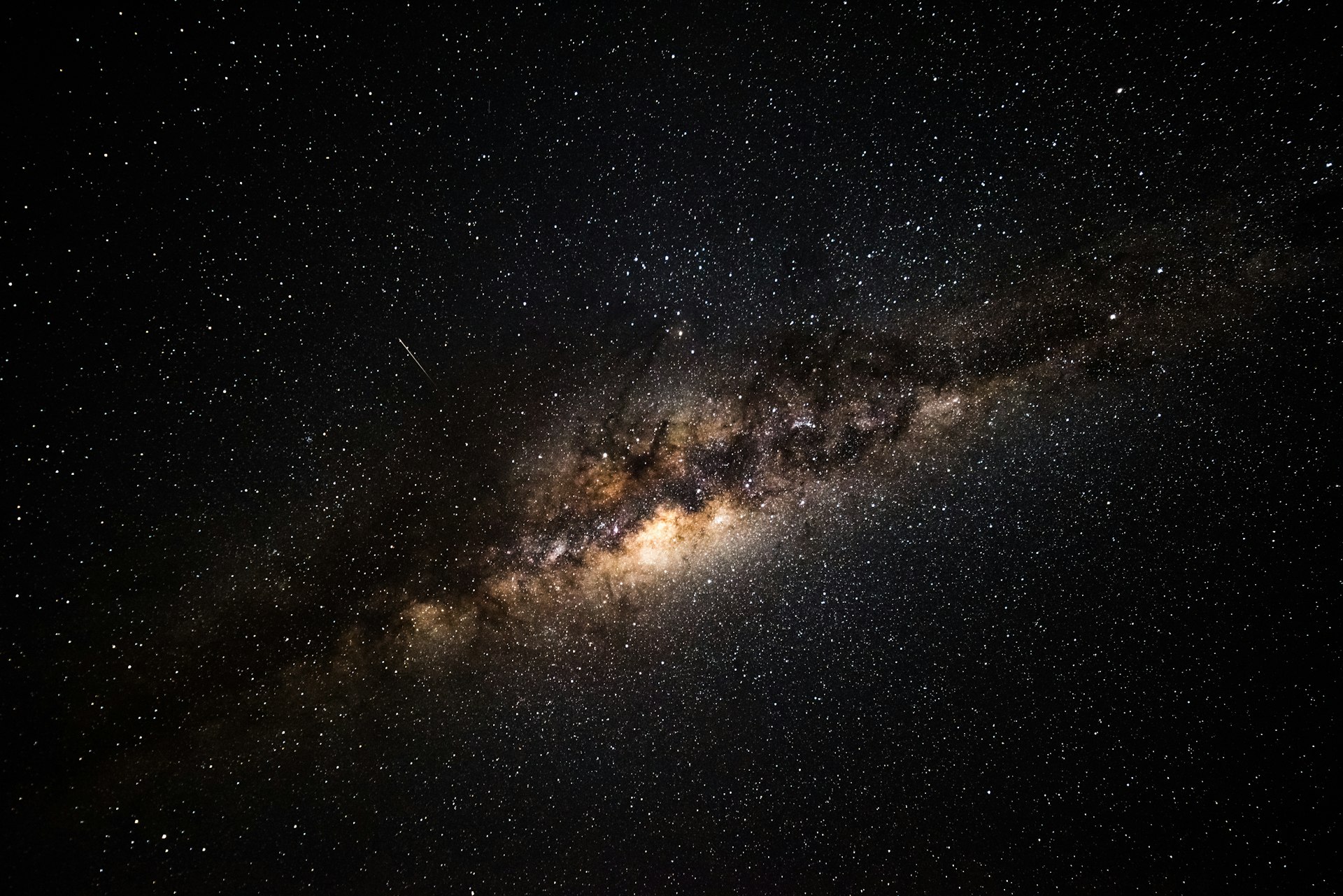Unlocking Cosmic Mysteries: Machine Learning Transforming Astrophysics Data Analysis


Photo by Brett Ritchie on Unsplash
Introduction: The New Era of Astrophysics Data Analysis
Astrophysics is undergoing a technological revolution. The scale of modern astronomical surveys-imaging hundreds of millions of galaxies, detecting gravitational waves, and mapping cosmic radiation-has created vast, complex datasets that traditional methods struggle to process efficiently. Machine learning is now essential to extracting meaningful insights from this data deluge, offering scalable, efficient, and accurate tools for scientific discovery [1] .
The Power of Machine Learning in Astrophysics
Machine learning (ML) leverages computational algorithms to identify patterns, classify objects, and make predictions from large and complex datasets. In astrophysics, ML is now used across key domains such as galaxy classification, gravitational wave detection, exoplanet transit identification, and simulation enhancement [1] . The rapid adoption of ML has led to an exponential increase in research publications and practical breakthroughs, with nearly 500 astrophysics papers mentioning deep learning or neural networks in their abstracts in a single year [3] .
Key Algorithms and Their Applications
Several machine learning techniques are particularly impactful for astrophysics:
- Convolutional Neural Networks (CNNs): Essential for image analysis, CNNs automate galaxy morphology classification and detect exoplanet transits in photometric data [1] .
- Support Vector Machines (SVMs) and Random Forests: These algorithms improve the accuracy of classifying astronomical objects and are resilient to noisy data, vital in exoplanet detection and gravitational wave analysis [1] .
- Recurrent Neural Networks (RNNs) and Autoencoders: RNNs analyze time-series data, such as variable stars, while autoencoders are used for anomaly detection and data compression [1] .
- Generative Adversarial Networks (GANs): GANs enhance the quality of cosmological simulations, providing higher-resolution synthetic data for hypothesis testing and model validation [1] .
Real-World Examples and Impact
Machine learning has already yielded significant advances in astrophysics:
- Galaxy and Quasar Classification: ML automates the identification and classification of galaxies and quasars from imaging surveys, massively accelerating research timelines [2] .
- Photometric Redshift Estimation: ML models improve the precision of photometric redshift calculations, which are vital for mapping the universe’s structure and evolution [2] .
- Gravitational Wave Detection: ML techniques filter and identify gravitational wave signals from noisy detector data, significantly boosting the rate and reliability of discovery [1] .
- Cosmological Simulations: Deep learning accelerates and refines simulations, enabling faster hypothesis testing for cosmology research [3] .
These examples demonstrate how machine learning is not only a research accelerator but also a tool that democratizes participation in astrophysical research globally [2] .

Photo by BoliviaInteligente on Unsplash
How to Get Involved: Steps for Engaging with Machine Learning in Astrophysics
If you are a student, researcher, or industry professional interested in integrating machine learning into astrophysics data analysis, there are several actionable pathways to begin:
- Build Foundational Skills: Learn the basics of machine learning and data science through online courses, textbooks, and hands-on tutorials. Many universities and organizations offer accessible resources.
- Access Open Data: Numerous astronomical surveys, such as the Sloan Digital Sky Survey (SDSS), release their data to the public. You can find these datasets by searching for “public astronomical data repositories” or visiting major observatories’ official websites.
- Join Collaborative Initiatives: Participate in interdisciplinary workshops and hackathons, such as the ICML Machine Learning for Astrophysics workshop. Registration details and schedules are typically available on major machine learning conference websites [3] .
- Explore Research Communities: Engage with communities like the Center for Computational Astrophysics (CCA) and initiatives such as Polymathic AI, which focus on advanced ML applications in scientific research [4] .
- Contribute to Open-Source Projects: Search for astrophysics machine learning projects on platforms like GitHub, where you can contribute code, datasets, or documentation.
For step-by-step guidance:
- Start by identifying your area of interest-imaging, time-series, simulation, or another subfield.
- Review recent literature on ML applications in that area.
- Experiment with open-source ML toolkits (such as TensorFlow, PyTorch, or scikit-learn) using astronomical datasets.
- Network with researchers through conferences, online forums, or university programs focused on computational astrophysics.
Challenges and Solutions in Machine Learning for Astrophysics
While machine learning offers transformative potential, several challenges remain:
- Data Quality and Labeling: Astronomical data is often noisy, incomplete, or sparsely labeled. Solutions include developing robust algorithms that handle uncertainty and using transfer learning to leverage labeled data from related domains [1] .
- Interpretability: Understanding how ML models arrive at predictions is crucial for scientific credibility. Research is ongoing into explainable AI and transparent algorithm design [5] .
- Computational Resources: Training deep learning models on petabyte-scale datasets requires significant computational power. Cloud computing and access to high-performance computing clusters may be necessary. Many universities and research organizations offer access to these resources for qualifying projects.
To address these challenges, collaboration between domain experts and machine learning specialists is essential. Interdisciplinary workshops and advisory groups, such as those coordinated by CCA and Polymathic AI, are leading efforts to develop robust, interpretable, and scalable ML models for science [4] .
Future Trends and Opportunities
The future of machine learning in astrophysics is bright. Researchers are developing “foundation models”-large, pre-trained AI systems that can be fine-tuned for multiple scientific applications, similar to advances made in computer vision and natural language processing [4] . These models could enable rapid, cross-disciplinary discoveries by sharing scientific knowledge across domains. As the field evolves, expect more open collaboration, democratization of tools, and breakthroughs in both fundamental science and technical capability.
For those interested in participating in this rapidly growing area, staying informed about the latest research, joining collaborative initiatives, and seeking mentorship from established research centers are highly recommended steps.
Conclusion: Taking the Next Step
Machine learning is reshaping astrophysics, making it possible to analyze vast datasets and unlock new cosmic mysteries. Whether you are a student, an early-career researcher, or an industry professional, there are multiple pathways to contribute to and benefit from this revolution. Begin by building your skills, engaging with research communities, and leveraging publicly available data and tools. While challenges remain, the opportunities for discovery, collaboration, and impact are greater than ever before.
References
- [1] EPJ Conferences (2025). Machine Learning Revolutionizing Astrophysical Discoveries.
- [2] arXiv (2023). Machine Learning Applications in Astrophysics: Photometric Redshift Estimation.
- [3] ICML Workshop 2022. Machine Learning for Astrophysics.
- [4] Simons Foundation (2024). Machine Learning X Astrophysics.
- [5] Wiley (2022). On the application of machine learning in astronomy and astrophysics.




